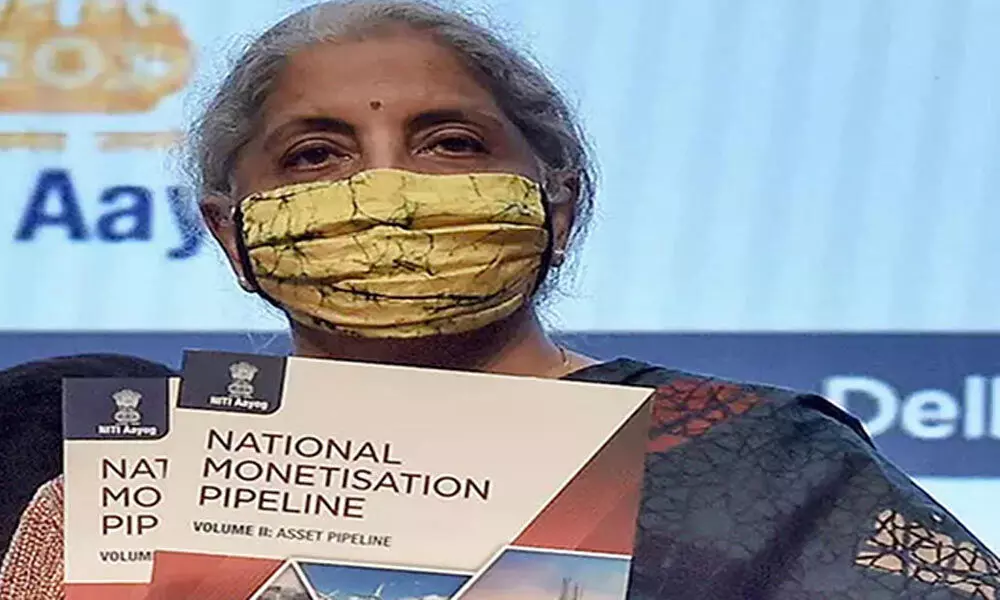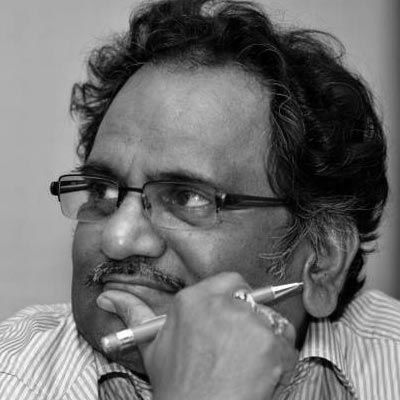Heavy burden of prices on people

Finance Minister Nirmala Sitharaman
The civil society is now grappled with new expressions like “brownfield investment” which means a company or government entity takes over the existing production facilities to facilitate launching a new production activity
The civil society is now grappled with new expressions like "brownfield investment" which means a company or government entity takes over the existing production facilities to facilitate launching a new production activity. Best example for this financial resource strategy is 'foreign direct investment.'
An alternative expression to this is a 'greenfield investment,' wherein a fresh plant is constructed. In the brownfieldinvestmentstrategy, the advantage is that the buildings are already constructed, the investor may not have to spend on new buildings. In the brownfield category, the land could have been unused or abandoned or not put to proper use, contaminated or became dangerous to use because of pollution or soil contamination.
These two expressions get totally changed in the new policies aggressively pursued by the present NDA government to strengthen economy. Monetisation is being introduced as a tool of brownfield investment. For greenfield investment, the infrastructure under the brownfield assets are being leased out or exclusive rights to make profits over will be transferred.
On August 23, Finance Minister Nirmala Sitharaman announced the National Monetisation Pipeline (NMP), which is expected to fetch around Rs 5.96 lakh crore to the government. Following on the Budget's plan to monetise public assets to fund fresh capital expenditure on infrastructure, the government released a list of projects and facilities to be offered to private investors over the next four years through structured leasing and securitisation transactions.
The question is what is happening to the lakhs of crores of rupees earned from GST and Income Tax. The provisional figures of Direct Tax collections for the Financial Year 2020-21 show that net collections are at Rs 9.45 lakh crore. The net Direct Tax collections include Corporation Tax (CIT) at Rs 4.57 lakh crore and Personal Income Tax (PIT) including Security Transaction Tax (STT) at Rs 4.88 lakh crore. The net Direct Tax collections represent 104.46% of the Revised Estimates of Rs 9.05 lakh crore of Direct Taxes for the FY 2020-21.
The official sources disclosed that the gross collection of Direct Taxes for the FY 2020-21 stood at Rs 12.06 lakh crore. The Advance Tax collections for FY 2020-21 stood at Rs 4.95 lakh crore which shows a growth of approximately 6.7% over the Advance Tax collections of the immediately preceding Financial Year of Rs 4.64 lakh crore. There are several other sources of income to the Centre. Apart from this, the Centre took Rs 1.76 lakh crore from Reserve Bank of India twice. The government should be transparent enough to inform the people why such huge amounts were taken from reserves, where it was spent and what were the benefits derived from this funding. Did they generate any tangible infrastructure for the nation, with this money?
The government's hurry to get Rs 5.96 lakh crore from monetisation shows that the nation's economy is not in complete health. But the finance minister says that was not the reason for monetisation and they look forward to initiate Rs 100 lakh crore new infrastructure with the income generated from monetisation.
No manifesto, no consultation
The policy of monetisation was not specifically informed to the people either by BJP or NDA partners in their respective manifestos. Also, there was neither consultation nor discussion at the concerned fora. There was no discussion in Parliament. The government just announced it without further details. There was no effort to allay fears and apprehensions about the increased rise in user or utility charges etc. While transparency is the first casualty of this scheme, the second victim is feared to be the 'public interest.'
When private parties pay around Rs 6 lakh crore, if the things move in the direction planned, to the government, they naturally look for earning back more than Rs 12 lakh crore from the people. This means a serious assault on the purse of the common man. What is the present income generated from the use of these infrastructure facilities under the control of the government? Why has it failed to realise the full potential of this as source of instruction? What are the reasons for underutilisation or making it to generate optimum income? Has it proved to be inefficiency in the public sector, which could be replaced by the efficiency (if any) of the private enterprises? What would be the impact on the common man, when the private enterprise having monopoly over its utility plans to make more money out of it? Government did not bother to answer these common questions.
Can we avoid corruption?
This kind of allocation of assets owned by people and managed by the government to private investors mostly operated by political influence, which should be condemned as corruption. If the transactions are not transparent, NMP will result in favouring a few businessmen close to the powerful persons. It will also lead to monopoly in the hands of a few corporate entities. Government cannot always focus on the profits because it has a duty to help the people in need. During Covid19 it had to enforce capacity caps, pricing floors and ceilings of flights, denying passenger footfall to airports to save some other airlines which are suffering losses due to many reasons. The entrepreneurs who took control of national assets for profit may not enforce any health norms to prevent further spread of harm of virus.
Once control over utilities is out of the government's hands for years and goes into the hands of a few persons, for some decades, the people apprehend that user charges will be rising every year on operators of roads, railways, airports, power grids and gas pipelines ultimately affecting adversely the general public.
Who will take care of consumers interest or public interest at large, which the monopoly over the national infrastructure is granted to a few private enterprises for the sake of a few lakh crores of rupees? In Andhra Pradesh when the electricity charges were raised abnormally, people agitated leading to police firings and killings. Later, the anti-government mood spread further to dislodge the government in next polls. If the power lines and transmission units are monetised, the electricity consumer charges will increase.
Grand designs
It is a grand promise to have 111 lakh crore infrastructures. It is a grand desire to have 5 trillion-dollar economy. And there is a grand design for asset monetisation. A Task Force rolled out the National Infrastructure Pipeline. The report says out of Rs 111 Lakh crore, states are expected to contribute 24 per cent, and they are also advised to monetise the infrastructure. From roads, 640 4-lane or 6-lane roads for 620 km will be given on lease. The Central government is expected to contribute Rs 43 lakh crore. Besides expecting Rs 6 lakh from monetisation, it has to explore other resources like floating bonds etc., to raise remaining funds. But there is no commitment from the Centre to its part of contribution.
The length of roads network in India is 1.32 lakh kilometers. Out of this which roads and which length of roads will be chosen for leasing out? Similarly, how many of 60,000 MW capacity power generation centers will be monetised. There are 137 airports and 12 major ports in the hands of the Centre, besides 69,000 tele towers and 5.2 lakh km optic fiber. The list of infrastructures for monetisation also include 7,300 railway stations out of which only 350 generate income. If these 350 railway stations are leased out to any private agency, he will surely collect more amount than crores of rupees he might spend on it. The scheme expects Rs 76,000 crore from 30 year-lease of these stations. In that case, user charges will be higher in 350 stations than those in other stations. Is this inequality a violation of Article 14?
It is not known how other infrastructure installations like power houses, sports stadia, oil pipelines, electricity transmission lines, national highways will be leased out. Another mystery is about monetisation of title deeds of land. If electricity generation is leased out for 49 years and power transmission for 99 years, who will rationalise the charges burden on consumers? If titling of land is also valued and transferred on lease for 35 years, for the profit of the private individual, how does the State will secure in monetisation? What will be the burden on the State in general?
(The author is Dean & Professor, School of Law, Mahindra University, Hyderabad, and former Central Information Commissioner)
(The opinions expressed in this column are those of the writer. The facts and opinions expressed here do not reflect the views of The Hans India)
Madabhushi Sridhar Acharyulu
















